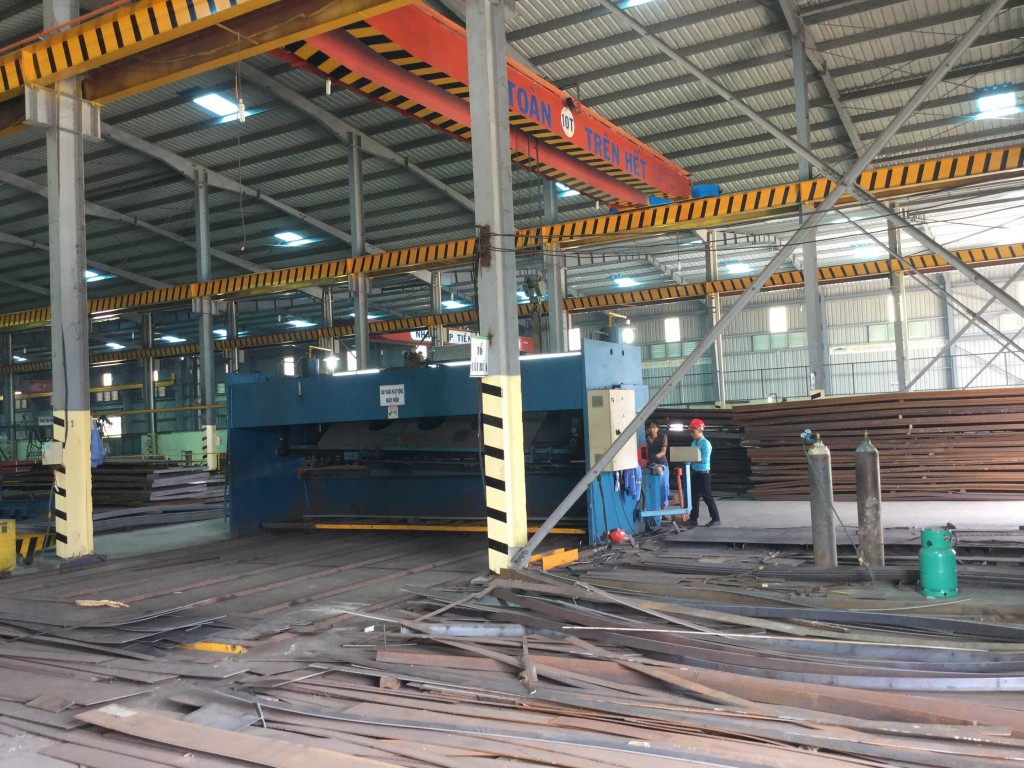Cutting: According to the machining drawing, the worker passes the sheet to the cutter and cuts it into discrete billets of the structure. For oversized components (trusses or trusses), we use a chamfering machine and then welding head-on 2 steel billets. The welding seam always meets the ultrasonic standard, giving the product extremely high durability.
Machining the code: to connect the steel structures together, we use bolts to tighten them through the code (the punched link). Chi Viet CVC Steel Structure Joint Stock Company uses many specialized drilling machines, creating round holes or ovens for the code without resorting to rock. Thanks to that, ensuring the technical and aesthetic high.
After drilling and cutting, the billet is re-measured to ensure the correct size and code.
Assembly: The discrete components are transferred to the assembly machine, where they are straightened, rounded and assembled into parts by temporary welds, according to the specified code. number to ensure components are not misplaced.
Welding: To ensure that the components of the components stick together as a unified unit, they are passed through the automatic submerged arc welding system. With a temperature of more than 1200 degrees Celsius, the two edges of the two steel plates are melted and joined together as if molded out from a mold.
The welding path is checked by ultrasonic or magnetic test to ensure the cohesion between the two components.
Leveler: The high temperature of the welding machine can cause the components to warp. To ensure the components have absolute precision when erected, they are passed through a straightener. Here, by hydraulic motor, the warping sides will be straightened.
Structure surfaces are measured with technical gauges to ensure straightness and square.
Assemble the code: To attach the code to the body, we use a steel saw to straighten the two ends of the structure before mounting the code. With this technique, the linked code will not be warped, the installation of the truss at the project will also be more accurate and aesthetic.
Hygiene: 30% of the life of a steel building is determined by the quality of the coating. To paint with high adhesion and withstand weather damage, before painting, steel components are put into automatic ball blasting machine to clean the surface (according to SA 1.0-2.5 standard). The steel balls are blasted by dozens of motors on the surface of components continuously for 10-30 minutes, making them metallic and creating a “typical” technical roughness, which helps the paint adhere to it many times. . Once again, the quality control officer measures the surface of the structure to ensure the roughness is in compliance with the committed standards.
Paint: Finally, the stage of coating components. There are 3 coating layers. First is lightning protection paint followed by 2 coats of coating. The completed components are checked for quality before being transported to the building ready for erection.

